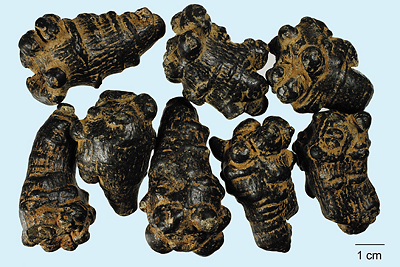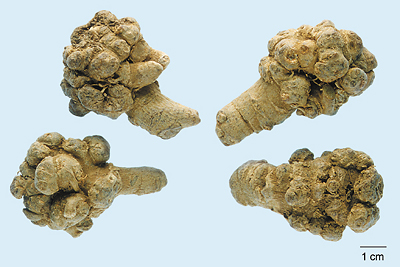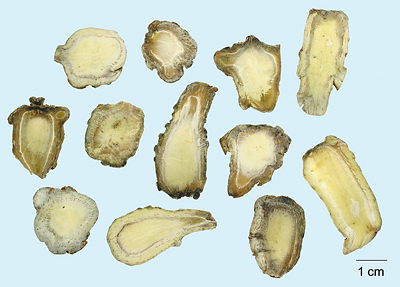Sanchi
Sanchi
Sanqi
三七
Source
The root of Panax notoginseng (Burk.) F. H. Chen (Fam. Araliaceae).
Distribution
Mainly in Chinese provinces such as Guangxi and Yunnan. Mostly cultivated.
Harvest & Processing
Collect roots in autumn before efflorescence, usually in the third or fourth year of cultivation; wash clean; separate axial roots, lateral roots from rhizomes; dry under sun until half-dry; knead repeatedly; remove cork. The sanqi commonly used in Hong Kong are roots which have been coloured with coal smoke and lustred with insect wax.
Description
Axial root subconical or cylindrical. Outer surface dull greyishbrown or greyish-yellow, marked with interrupted longitudinal wrinkles, scars of branch roots and a few lenticels; apex marked with stem scars; with encircling strumiform (cushion-like) protuberances. Heavy; hard and solid; cortex and xylem often separate when crumbled. When broken, surface greyish-green, yellowish-green or greyish-white; cortex dotted with small brownish resin ducts; xylem slightly radial. Odour: light; taste: bitter, gradually sweet.
Indications
1. Various kinds of bleeding especially traumatic bleeding
2. Amenorrhoea, dysmenorrhoea
3. Coronary heart disease, angina pectoris, hyperlipidemia, chronic infectious hepatitis
Chemical Composition
Mainly contains notoginsenosides and ginsenosides.
Photos



